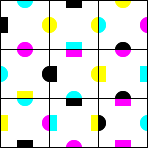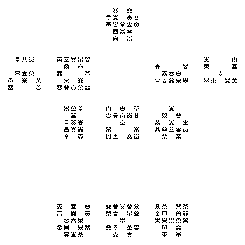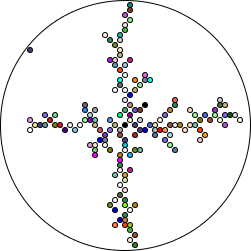Today’s task comes from the Code Golf StackExchange. The idea behind code golf is to write a program with as few characters as possible, often rendering the code nigh on unreadable. Luckily, the same StackExchange also host popularity contests, one of which is the inspiration behind today’s post:
You are given two true color images, the Source and the Palette. They do not necessarily have the same dimensions but it is guaranteed that their areas are the same, i.e. they have the same number of pixels. Your task is to create an algorithm that makes the most accurate looking copy of the Source by only using the pixels in the Palette. Each pixel in the Palette must be used exactly once in a unique position in this copy. The copy must have the same dimensions as the Source. – American Gothic in the palette of Mona Lisa: Rearrange the pixels











